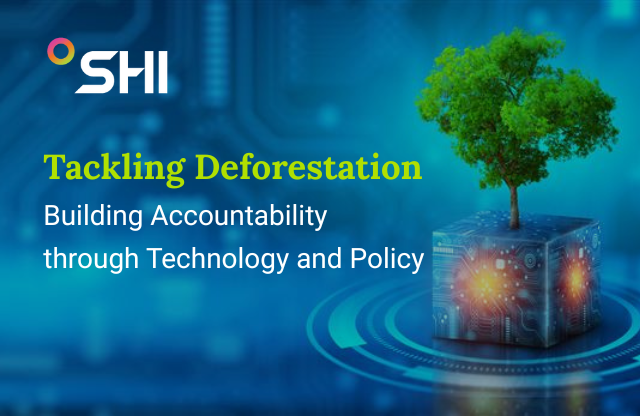Tackling Deforestation: Building Accountability through Technology and Policy
Deforestation remains one of the most pressing environmental challenges of our time. India continues to lose forest cover at a worrying rate. According to the Global Forest Watch, the country lost around 2.3 million hectares of tree cover between 2001 and 2023, contributing roughly six percent of its annual carbon emissions. This loss also threatens about eight percent of global biodiversity found within India’s forests. The issue is not limited to land clearing; it lies in how weak systems fail to detect and prevent it. The goal now is to build a framework that is fast, transparent, and inclusive enough to make a measurable difference.

Global Lessons and What They Teach Us
Some countries have shown that combining technology with strong policy can create real impact. Brazil’s DETER system, for example, uses near-real-time satellite data to detect illegal logging. Every two weeks, it sends deforestation alerts to enforcement agencies. While DETER helped Brazil reduce deforestation by more than seventy percent between 2004–2012, it has faced challenges in recent years as enforcement weakened. This shows that technology alone cannot succeed without consistent political support.
Indonesia offers another example. It placed a moratorium on new palm oil concessions and committed to REDD+ programs. Yet, despite this progress, loopholes in land-use permits and weak local enforcement remain major systemic weaknesses. Europe has taken a different approach by introducing import regulations to ensure that commodities linked to deforestation cannot enter its markets.
India’s approach is largely policy-driven. Through programs such as the Compensatory Afforestation Fund (CAMPA) and the Green India Mission, the government aims to restore degraded forests and offset deforestation. However, reports by the Comptroller and Auditor General have criticized CAMPA for inefficiency and lack of transparency. Large sums remain unused, and there is limited tracking of whether reforestation goals are being met.
Centralization, Partnerships, and Accountability
Brazil’s success came from centralization and enforcement, while India’s system is highly fragmented. Forest monitoring, funding, and enforcement are handled at different levels, making coordination difficult. This is where India can rethink its approach.
A stronger model could involve public-private partnerships that bring together government agencies, technology firms, and local NGOs. The government can create enabling policies, while private organizations provide innovation and infrastructure. NGOs can ensure that the solutions reach local communities. Without clear strategies, even the most advanced technology will not reach those who need it most.
Technology as a Catalyst for Change
Technology is the most effective way to bridge the gap between intent and action. Satellites can provide open-access imagery to monitor land use changes. This would enable forest departments and citizens to view updated forest data regularly, rather than every few months. Artificial intelligence can then analyze this data, identify illegal clearings, and predict potential hotspots before they spread. Blockchain can serve as a transparent record of forest clearing permissions. Each transaction can be time-stamped and verified, preventing unauthorized land use and corruption in approval processes.
Mobile-based platforms can empower forest workers and villagers to report illegal logging directly through a simple application. These reports could be automatically synced with a central monitoring system and alert relevant authorities in real-time. Together, these tools can turn policy promises into actionable outcomes.
Solutions to Tackle Deforestation in India
Daily Forest Monitoring:
- Using satellite technology for frequent observation of forests.
Predictive Analytics:
- Employing artificial intelligence to identify deforestation risks.
Mobile Applications:
- Developing apps for reporting deforestation and raising awareness.
Transparent Land Records:
- Utilizing blockchain technology to maintain clear land ownership data.
Making the Solution Work
The key to making this model sustainable lies in clear policy alignment. India could provide tax credits or green subsidies for companies that commit to verified zero-deforestation supply chains. Technology startups can collaborate with certification agencies to track products from forest to factory. Governments can license these technologies while ensuring that local communities are compensated and involved in decision-making.
Norway’s performance-based funding model for forest protection offers a valuable lesson. It ties financial support to measurable outcomes, which India can adapt to create an accountability-based incentive structure for both government and private players.
A Way Forward
India has the resources and intent to protect its forests. What is missing is a coordinated system that links innovation with enforcement. With the right partnerships, policy clarity, and data-driven technology, deforestation can be addressed not as an isolated issue but as part of a sustainable growth strategy.
Conclusion
This blog post explores how technology can meaningfully advance sustainability. At SHI, we are excited to pursue projects that benefit the planet and its people. Our AI Center of Innovation is focused on exploring solutions for near-real-time analysis of satellite data to bring actionable insights that protect India’s forests.


